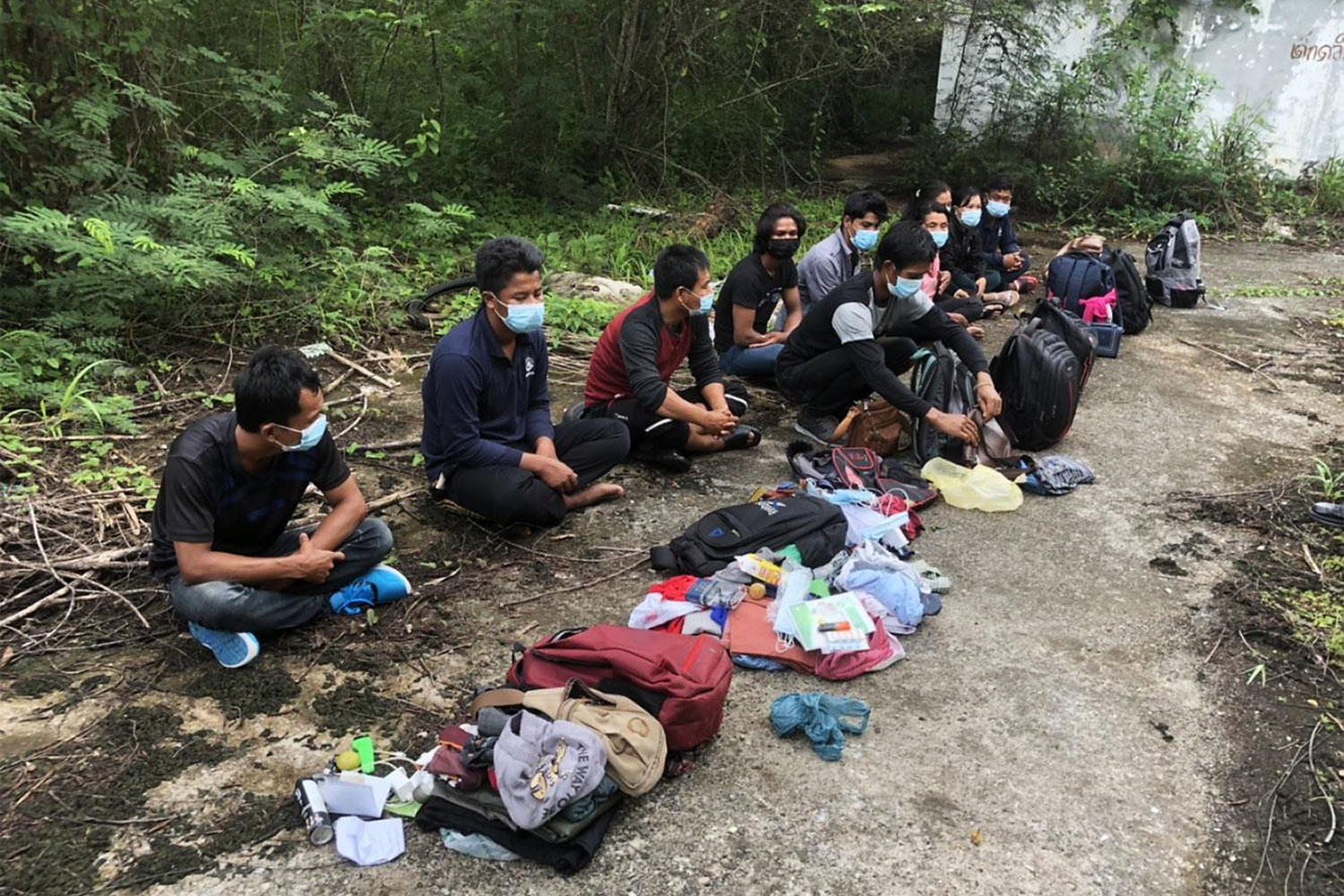
Thailand's apparent failure to deal with the issue of human trafficking over recent months has resulted in a downgrade of its performance in the 2021 Trafficking in Persons (TIP) annual report, issued by the US in July.
The country fell from Tier 2 ("mediocre") to Tier 2 Watchlist ("worrisome").
The downgrade is due to a number of reasons. An assessment was conducted in 2020 when law enforcement and prosecutions were less than those in 2019.
Protection of victims was problematic, with inadequate services and attention to the trauma of victims. Weaker preventive action was exemplified by a lack of prosecutions in regard to suspected abuses affecting the crews of some fishing boats, even if there is now a port-in and port-out obligation for these boats to report their operations.
But this sliding back is not in line with the upgrade of labour laws and related policies that Thailand has carried out in recent years after it became a member of an international treaty known as the Palermo Protocol.
Moreover, the country has boosted what it needs to do in addressing forced labour due to its membership in a treaty under the International Labour Organisation (ILO), known as ILO Convention number 29, which has now been supplemented by another treaty, its protocol.
Part of the problem lies in the morass of laws that have been adopted with inadequate synchronisation, plus clarification, with law enforcers and the public.
A key concern is the relationship between human trafficking and forced labour, and a lack of understanding of the commonalities between both.
For the purpose of clarification, there are three interlinked elements behind the crime of human trafficking; the act of transferring a person (for example, recruitment, transport or harbouring of an individual); the means of trafficking which is usually based upon an illicit modality, such as coercion or deception, and a purpose based on exploitation such as to push someone into prostitution, slavery or forced labour.
The second element is not required in regard to child trafficking that involves victims under 18 years of age. Invariably, human trafficking is tantamount to forced labour. However, there is one instance where trafficking is not forced labour -- trafficking for organ transplantation.
Meanwhile, forced labour is broader than human trafficking.
It dovetails three components: work or services; coercion, and the threat of a penalty or sanction when the victim does not submit nor comply. The penalty can go beyond threats or physical and mental harm, but malpractices such as confiscation of passports, delayed payment of wages, debt bondage whereby a person is compelled to work to pay off a debt, and even the threat that the person might be reported to the immigration authorities for illegal entry.
An example that can also illustrate the difference between forced labour from human trafficking is within military conscription. When a conscripted soldier is required to wash a car or plant trees for his superior, chores that go beyond usual military duties, it falls into the realm of forced labour.
It is also forced labour when civilians are compelled, against their own will, to grow rice or cotton for the development of the country.
So what is the Thai problem?
A major confusion between the crime of human trafficking and the crime of forced labour is due to the latest amendment in 2019 of the Prevention and Suppression of Human Trafficking Act 2008.
In Section 6/1 of the amendment, the crime of forced labour has been added to the prohibition of human trafficking. Under this, forced labour is defined as coerced work, including work subjected to violence, confiscation of identification documents and debt bondage.
Despite this, the amended law does not clearly spell out the differences in definition, the process of investigation and the gathering of evidence.
That makes it difficult to decide whether a culprit is to be prosecuted for human trafficking, forced labour or both.
Moreover, the amendment awards a heavier penalty for human trafficking.
While the penalty for human trafficking starts at 4 years imprisonment and up to a 400,000 baht fine, the penalty for forced labour is up to 6 months in jail, and up to a 50,000 baht fine.
The question of the huge discrepancy on the scale of the penalty is also stated in the 2021 Trafficking in Persons (TIP) annual report.
In reality, it can be argued that both practices are just as evil as each other and deserve to be sanctioned "on par".
On another front, there is a law that has upgraded the capacity of the courts to tackle human trafficking.
The Procedures for Human Trafficking Cases Act 2016 already empowers the courts to play a more active role with an "inquisitorial" approach, such as to seek relevant evidence rather than wait for the evidence.
The courts also have the power to order civil compensation to victims, even in criminal proceedings.
Yet there is a major challenge. Without an effective investigation process on the ground, there are fewer cases being sent to court.
The short term solution to fix the confusion in legal codes is to publish clear and easy to understand guidelines on the commonalities and differences between human trafficking and forced labour, with key examples drawn from real life, and explanations on the value-added of each notion for the purpose of protecting victims.
These should be paralleled by indications on what kind of evidence to gather and how to proceed with investigations, referrals, prosecutions and sentencing.
The ultimate lesson may also be that before the country passes a new law, the authorities should think hard about how it will be interpreted (or misinterpreted).
Suitable guidance on how to implement it well and effectively is also desired, together with incentives for good law enforcement and disincentives against opaque practices.
Vitit Muntarbhorn is a professor emeritus at the Faculty of Law, Chulalongkorn University. He has assisted the United Nations (UN) as Special Rapporteur, Independent Expert and member of UN Commissions of Inquiry on human rights.







